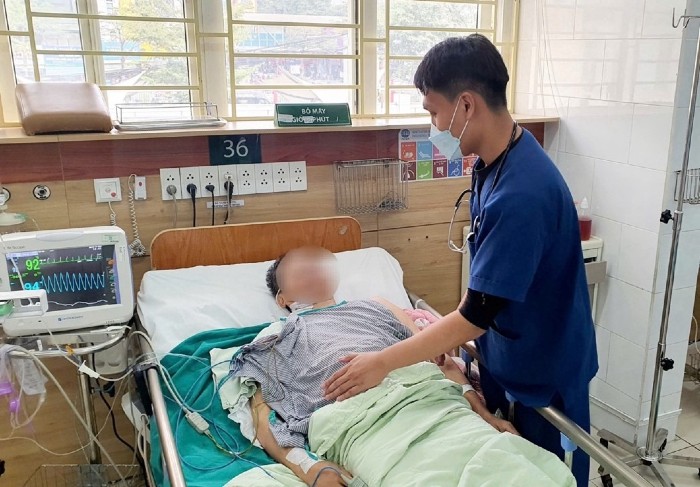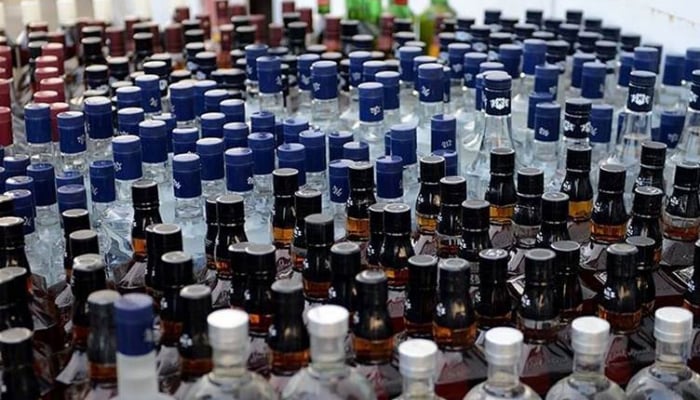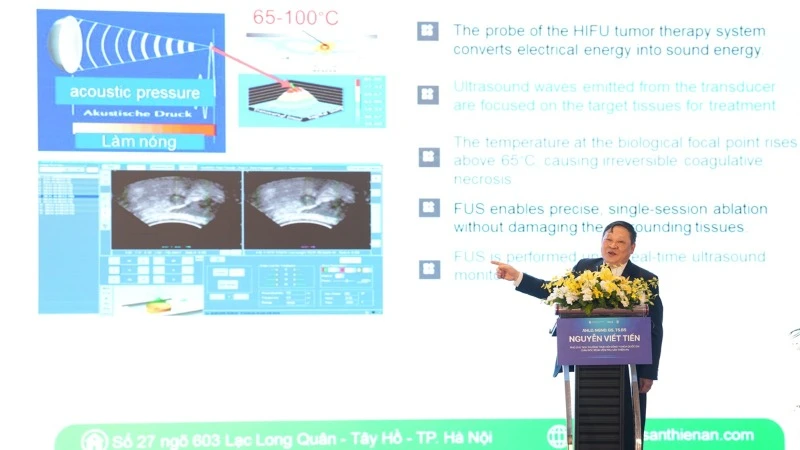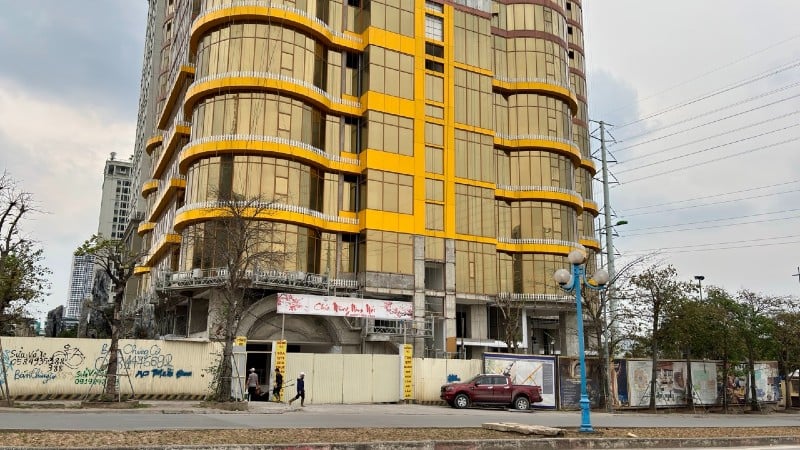Regarding the health status of the patients in the Long Bien poisoning incident treated at Bach Mai Hospital, the cause of the poisoning is complicated, but all patients have stabilized and are being discharged from the hospital.
Regarding the health status of the patients in the Long Bien poisoning incident treated at Bach Mai Hospital, the cause of the poisoning is complicated, but all patients have stabilized and are being discharged from the hospital.
On December 31, Dr. Nguyen Trung Nguyen, Director of the Poison Control Center, Bach Mai Hospital, said that regarding the health status of the patients in the Long Bien poisoning incident treated at Bach Mai Hospital, the cause of the poisoning was complicated, but all patients were stable and were being discharged from the hospital.
 |
| The patient on a ventilator in the poisoning case has been removed from the tube. |
Previously, on the night of December 19 and 20, Bach Mai Hospital's Poison Control Center continuously received 14 cases of suspected food poisoning.
These were all people who attended a party at a restaurant in Long Bien, Hanoi. Then, from December 21 to December 24, the hospital received 5 more cases, who were also people who attended the party that day for testing or had mild symptoms and were hospitalized.
The total number of people hospitalized for treatment and testing reached 19 cases. However, all the cases that came after were mild, recovered quickly and were discharged from the hospital. These cases all had one thing in common: they did not drink alcohol.
As of the morning of December 31, the cases of true poisoning (14 cases) have improved well. 8 patients have been discharged from the hospital. All cases of initial critical poisoning (5 cases) with severe metabolic acidosis, severe respiratory failure, shock, impaired consciousness, coma, requiring intensive care and blood filtration, have regained consciousness, had their endotracheal tubes removed and can breathe normally. These cases are still being treated and monitored, hoping that the damage will stop and improve.
According to information from the Poison Control Center, Bach Mai Hospital, the common characteristic of the patients was that they all drank white wine in ceramic bottles (later found to be brought by the event organizer). While drinking, many people noticed that the wine had a strange smell so they stopped and switched to other drinks.
Poisoning appeared late, mostly 6 hours or more after meals, with symptoms such as headache, nausea, some had abdominal pain, fever, mild diarrhea, rapid pulse. 5 patients had symptoms of impaired consciousness, respiratory failure, and hypotension.
Laboratory tests showed that all patients had metabolic acidosis with elevated blood lactate, not due to dehydration, respiratory failure, or infection. Many patients had signs of myocardial depression, some had mild myocardial and liver damage. Three cases had brain damage on MRI.
Blood tests at the Poison Control Center did not detect any ethanol or methanol, however, the presence of acetonitrile was suspected and the unit notified other testing agencies to coordinate in confirming the results.
Test results from the National Institute for Food Safety Control and the National Institute of Forensic Medicine showed that acetonitrile and cyanide were present in the blood and urine of all patients.
In the wine samples of the patients who drank, the concentration of acetonitrile was about 16%, methanol was about 10%. In addition, PCR tests with stool and gastric juice of 5 patients showed the presence of E.coli and Campylobacter bacteria.
According to Dr. Nguyen Trung Nguyen, acetonitrile (CH₃CN) is an organic chemical used as a solvent in industry, in medicinal extracts, lithium batteries and especially used in chromatography testing machines to test drugs, toxins... This is not an ingredient produced in the process of producing white wine.
The main cause of this poisoning is the chemical acetonitrile mixed in the wine for some reason. When entering the body, acetonitrile slowly metabolizes into cyanide and causes slow poisoning with symptoms appearing after many hours.
On average, symptoms of poisoning appear 3 to 12 hours after drinking, or even up to 24 hours. If the patient drinks alcohol at the same time, the rate of toxic metabolism of acetonitrile will be slower and symptoms of poisoning may appear up to 48 hours after drinking.
The metabolite of acetonitrile, cyanide, is an extremely toxic substance that inhibits cellular respiration, causing cell death and damage to various organs, especially the heart and brain.
The main symptom may be mild headache, but in severe cases the patient may experience coma, convulsions, rapid pulse, hypotension, heart and brain damage... with multiple organ damage and especially metabolic acidosis with increased lactate, with a very high mortality rate.
Many people in this poisoning incident were saved thanks to the slow toxic metabolism of acetonitrile, giving doctors time to promptly provide emergency care, resuscitation, detoxification and detoxification for patients before serious injuries could cause death.
This phenomenon of slow toxic metabolism is also seen in cyanide poisoning due to excessive consumption of cassava and bamboo shoots. However, with cyanides such as sodium cyanide and potassium cyanide, poisoning occurs almost immediately and the mortality rate is very high, as has occasionally occurred.
Regarding the concentration of toxic substances, the concentration of acetonitrile in the blood of 14 patients was very high, hundreds of times higher than the acceptable concentration.
The reason why patients drink alcohol containing industrial methanol, but are not poisoned by this substance is because the concentration of methanol and the total amount of alcohol consumed are not enough to cause poisoning.
Dr. Nguyen Trung Nguyen said that in this poisoning case, the symptoms of poisoning in the patients were very severe and multi-organ. There were 3 patients with brain damage, 1 patient with severe lung damage caused by the poison.
After treatment, one patient's brain lesions have significantly improved and are expected to disappear soon. The remaining two patients are preparing for another MRI scan to check their progress. The patient with lung lesions has fully recovered. The liver and heart lesions are also improving.
In close coordination with the authorities and testing units, the Poison Control Center has screened for potentially hazardous chemicals in alcohol to monitor and treat patients carefully. All patients are improving and continue to be monitored and cared for to ensure the best possible recovery.
Source: https://baodautu.vn/thong-tin-moi-nhat-vu-ngo-doc-thuc-pham-tai-long-bien-d237464.html




![[Photo] Overcoming all difficulties, speeding up construction progress of Hoa Binh Hydropower Plant Expansion Project](https://vstatic.vietnam.vn/vietnam/resource/IMAGE/2025/4/12/bff04b551e98484c84d74c8faa3526e0)
![[Photo] Closing of the 11th Conference of the 13th Central Committee of the Communist Party of Vietnam](https://vstatic.vietnam.vn/vietnam/resource/IMAGE/2025/4/12/114b57fe6e9b4814a5ddfacf6dfe5b7f)















![[Video] First time in Vietnam: Successful implantation of 3rd generation partial artificial heart](https://vstatic.vietnam.vn/vietnam/resource/IMAGE/2025/4/12/8817412224094c68ba2c744b7bd5cfea)









































































Comment (0)